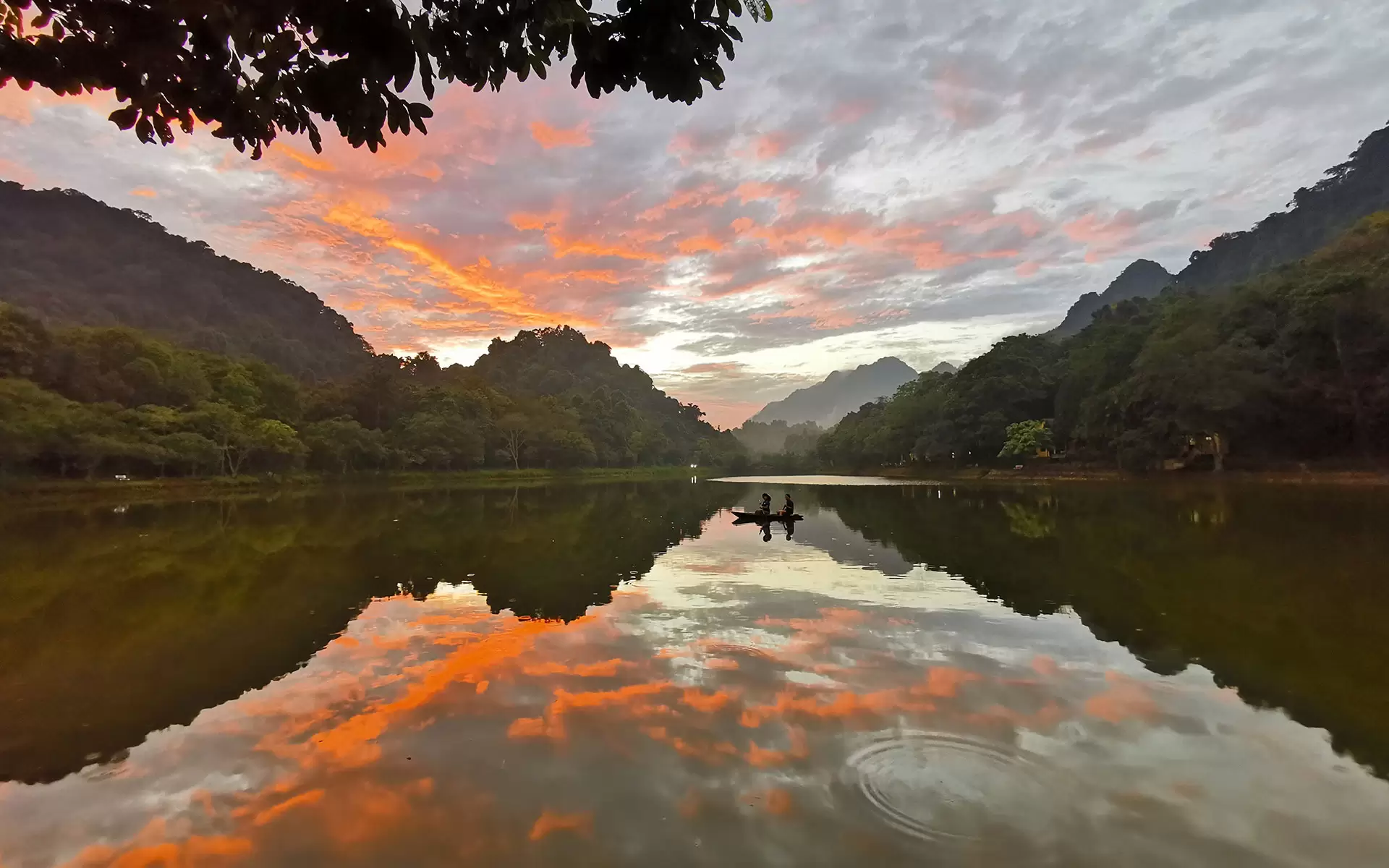Discover the ultimate camping in Vietnam through our comprehensive guide, highlighting top destinations and crucial tips to help you explore with confidence and make the most of your outdoor journey.
Camping in Vietnam unveils a captivating journey through diverse landscapes. From the majestic mountains to serene lakes and tranquil beaches, each site offers a picturesque setting. This immersive journey invites Vietnam travel enthusiasts to discover hidden gems, partake in local traditions, and forge enduring memories. The blend of nature and culture creates a unique camping escapade, promising a memorable exploration of Vietnam’s rich and varied terrain.
1. Why should you experience camping in Vietnam?
Vietnam, spanning its diverse regions, is a haven for camping enthusiasts, boasting destinations celebrated as “camping paradises.” Whether it is the lush valleys, hills, and vibrant lakes in the northern mountains, or the pristine beaches and lush plateaus in the central and southern regions, the country caters to a variety of camping preferences.
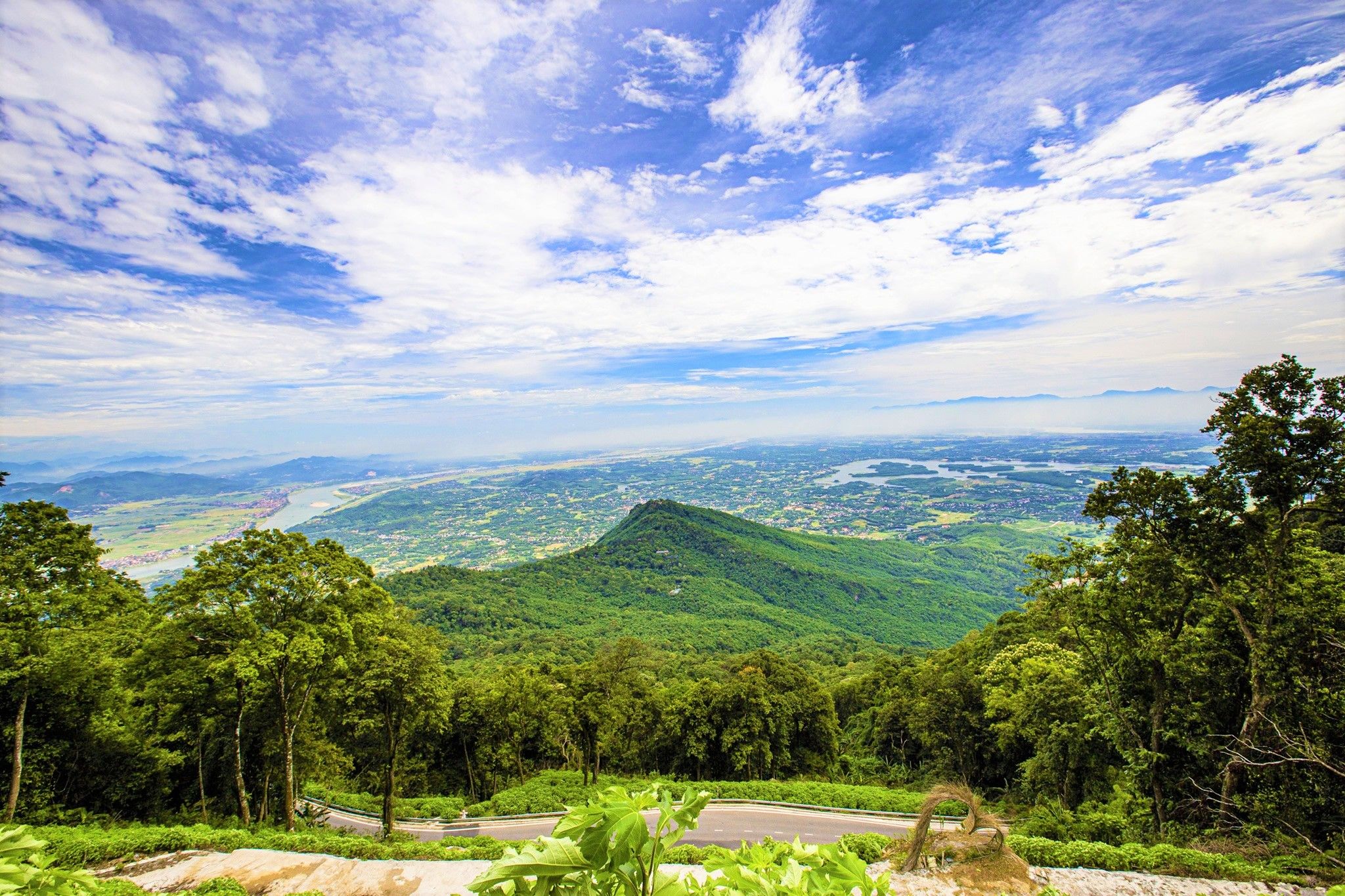
Camping tourism involves more than just setting up tents; it encompasses a range of activities such as tent pitching, campfires, hiking, mountain climbing, swimming, fishing, and cooking. Camping in Vietnam provides a unique experience, allowing travelers the freedom to immerse themselves in vast natural landscapes, listening to the symphony of rustling leaves and flowing waters, leaving behind the hustle and bustle.
Beyond the adventure, camping fosters connections as individuals come together to pitch tents, organize barbecue parties, and light campfires. This not only creates enduring memories but also strengthens bonds and understanding among friends or family. Moreover, the cost-effectiveness of camping trips makes them particularly attractive to budget-conscious travelers seeking an affordable and nature-immersive experience.
2. Where are the ideal destinations for camping in Vietnam?
2.1. National parks for wild camping in Vietnam
2.1.1. Ba Vi National Park (Ha Noi)
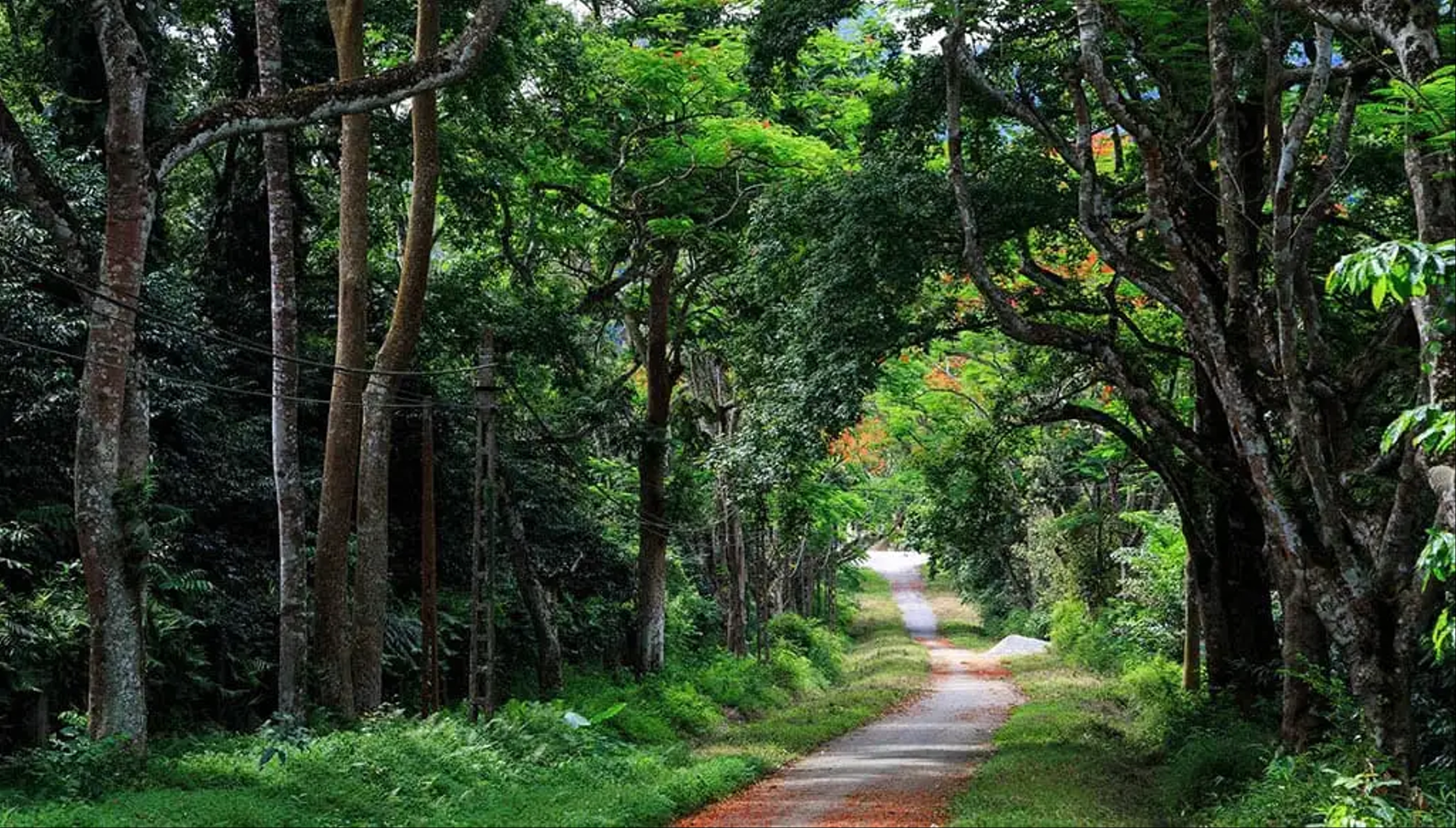
Ba Vi National Park emerges as a celebrated location for camping near Hanoi, about 60 kilometers west of Hanoi. Set against the backdrop of the Ba Vi mountain range, this haven boasts lush forests, diverse flora, and captivating wildlife. Campers can embark on thrilling hiking trails, explore ancient temples and French ruins, or summit the 1,296-meter-high Tan Vien Peak for breathtaking panoramic views. Adventure seekers can partake in bird watching, butterfly spotting, and refreshing dips in the pristine streams.
2.1.2. Cuc Phuong National Park (Ninh Binh)
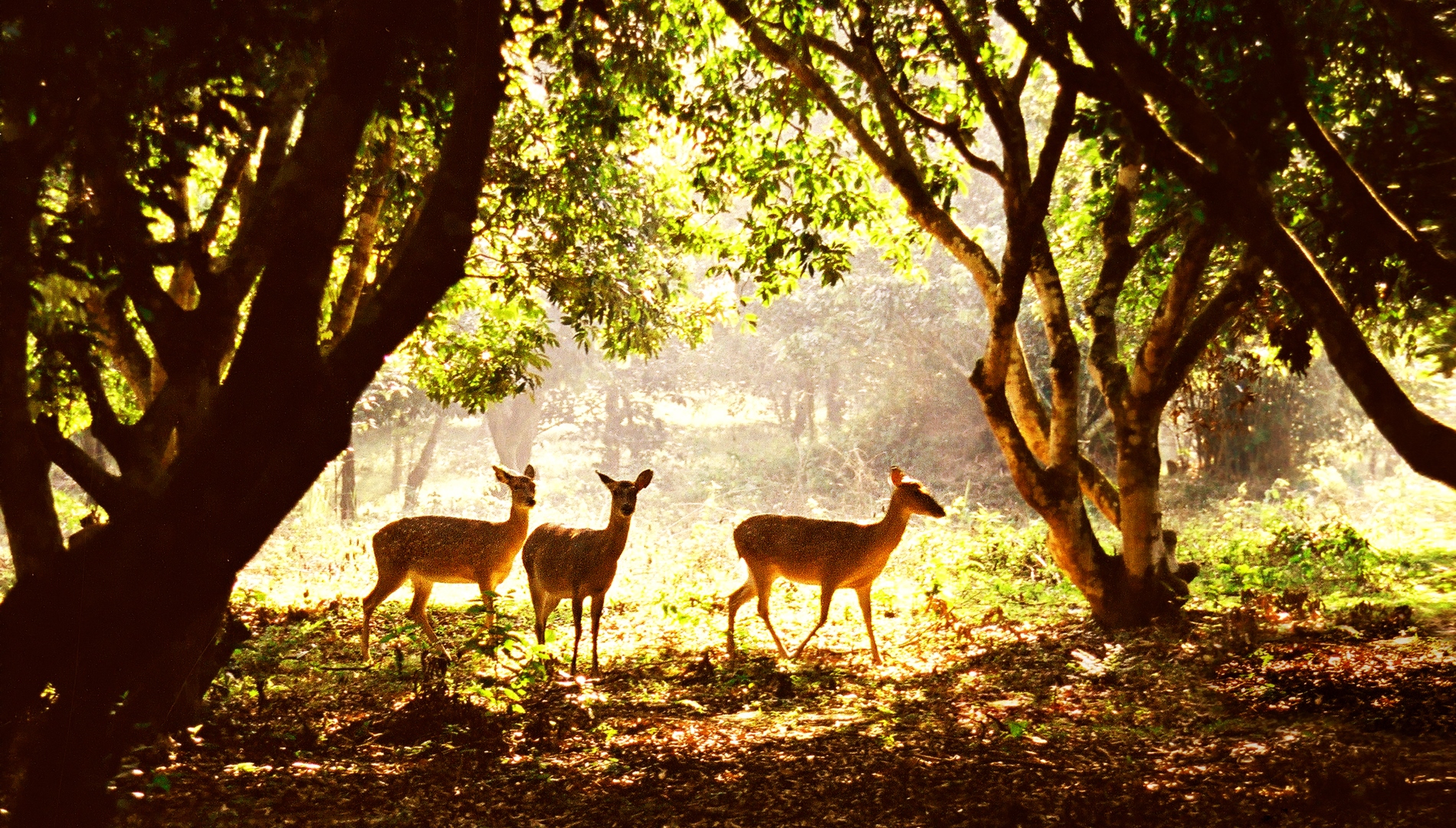
Camping in Cuc Phuong National Park in Ninh Binh Province promises an immersive retreat amidst a pristine, lush environment. Renowned for its diverse flora, fauna, and rare bird species, the park stands as a haven for nature enthusiasts, scientists, and bird watchers alike.
The prime camping season, spanning late April to May, aligns perfectly with the post-spring rains, offering a unique experience. During this period, the park comes alive with a vibrant butterfly season, casting mesmerizing displays. Campers can also explore well-maintained trails surrounded by ancient trees and vibrant wildlife leading to impressive limestone caves, fostering a deep connection with Vietnam’s untamed natural wonders.
2.1.3. Cat Tien National Park (Dong Nai)
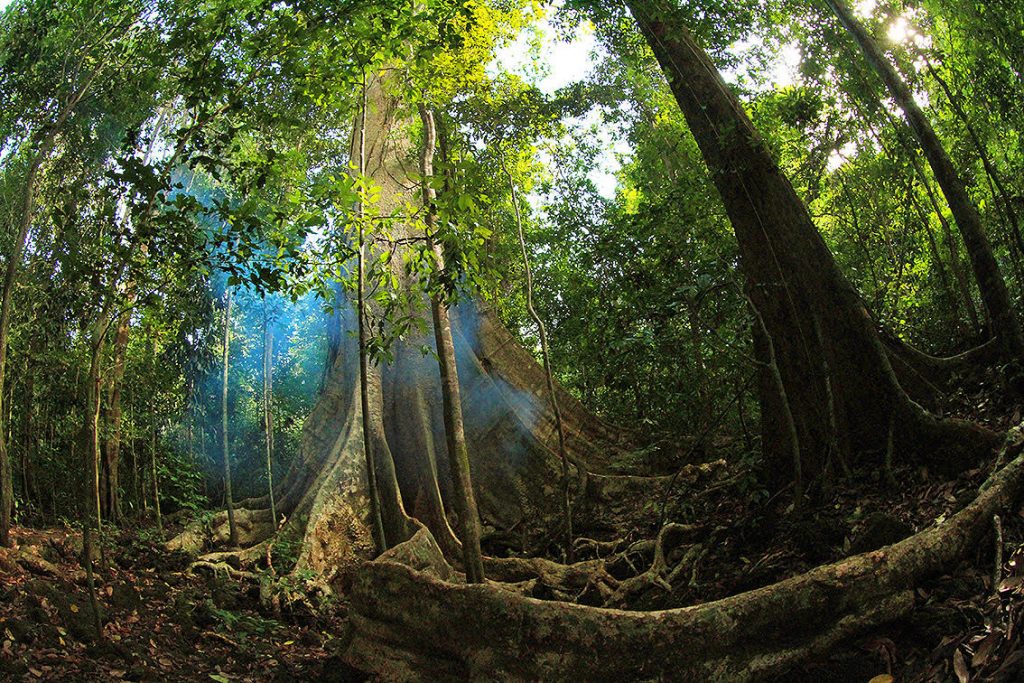
Situated at the fringes of an ancient forest, Cat Tien National Park in Dong Nai has emerged as a favored destination on the camping in Vietnam map. The camping area provides meticulous outdoor amenities, featuring two rows of well-equipped bathrooms and separate toilets within the camping grounds. With scenic additions like benches, swings, and communal BBQ pits, campers can gather for shared moments amidst nature.
For the self-sufficient camper, the option to bring personal gear, tents, and portable stoves is encouraged. Under clear night skies, campers can recline in their tents, gazing at the stars in the forest – an experience impossible in the bustling cityscape.
2.2. Mountainous areas and hills
2.2.1. Mu Cang Chai (Yen Bai)
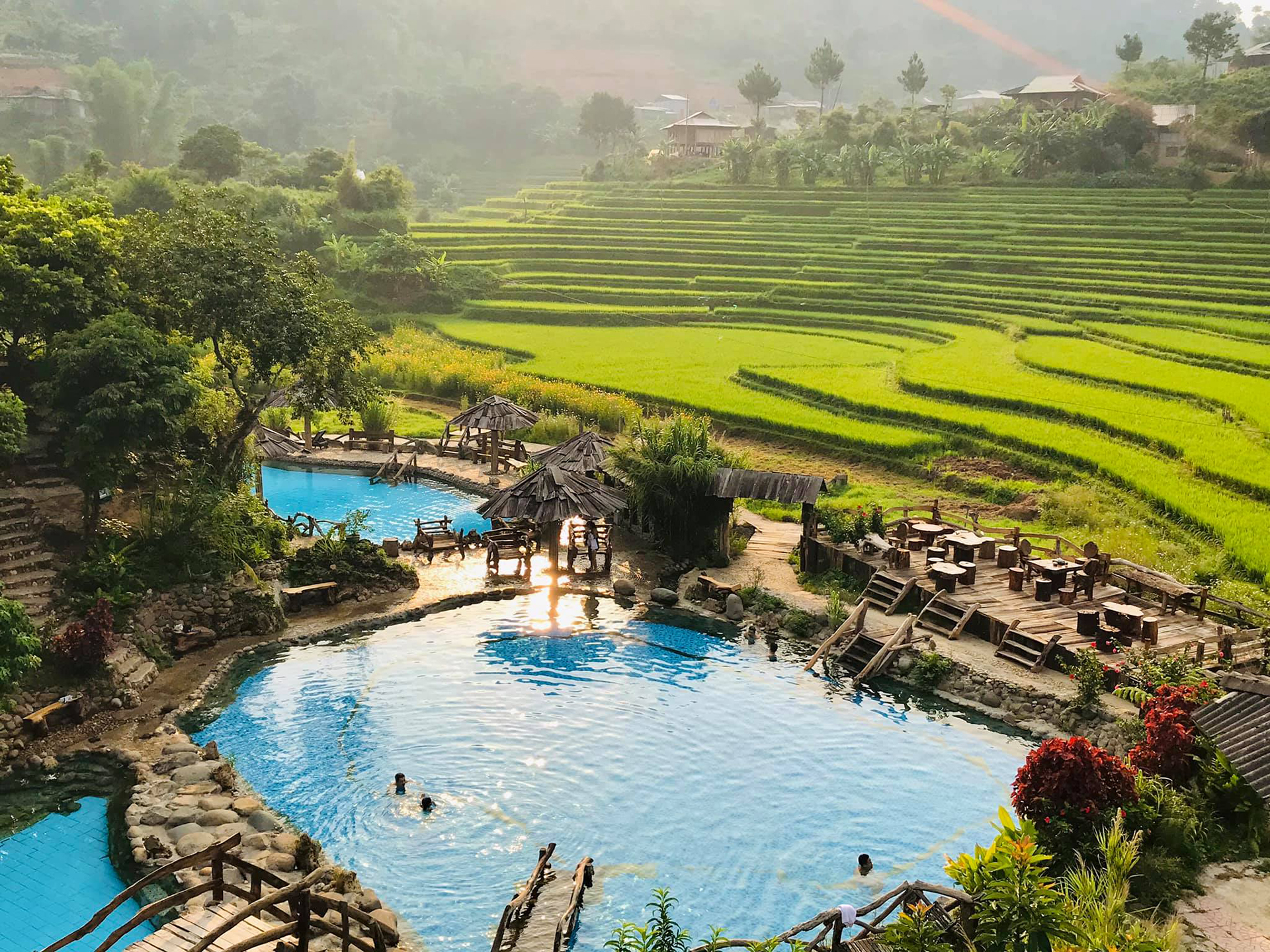
Nestled in the northeastern reaches of Vietnam, Mu Cang Chai in Yen Bai Province beckons after a picturesque journey from Hanoi. Renowned for its breathtaking landscapes, the region features expansive rice terraces and charming ethnic minority villages. The optimal time for wild camping in Vietnam Mu Cang Chai is between September and November, when the terraces transform into a golden tapestry complemented by blossoming buckwheat flowers.
During your travels, do not miss the opportunity to conquer the mesmerizing Khau Pha Pass. While the potential for camping is abundant, it is advisable to inform local authorities in advance to ensure a respectful and seamless experience amidst the natural wonders of Mu Cang Chai.
2.2.2. Ta Xua (Son La)

Located 230 kilometers north of Hanoi, Ta Xua, one of Vietnam’s highest peaks, straddles the Yen Bai and Son La provinces. The journey to its summit, called Dinosaur’s Spine, at 1,600 meters above sea level, has gained popularity as a cloud-hunting haven despite its challenging terrain.
Tent camping in Vietnam takes on a thrilling dimension at Ta Xua, where setting up a tent overnight offers an unforgettable experience. Prior camping expertise in demanding terrains is advisable for this adventurous trek. Ta Xua Peak unveils a mesmerizing sea of clouds, with the period between October and April being the optimal time for a unique camping escapade.
2.2.3. Da Phu Hill (Lam Dong)

In recent years, cloud chasing has surged in popularity as a must-do activity in the enchanting city of Da Lat. At the forefront of this trend is Da Phu Hill, located just 12 kilometers from the city center, making it one of the most convenient and captivating camping sites in Vietnam.
This elevated vantage point offers campers an exclusive front-row seat to witness Da Lat’s splendor unfold like a living masterpiece, where flower-laden valleys and majestic pine forests seamlessly blend with the ethereal clouds above. With its tranquil charm and breathtaking views, Da Phu Hill invites camping aficionados to a prolonged sojourn, promising an immersive escape into the mesmerizing natural wonders of Da Lat.
2.3. Lakes for overnight camping in Vietnam
2.3.1. Dau Tieng Lake (Tay Ninh)
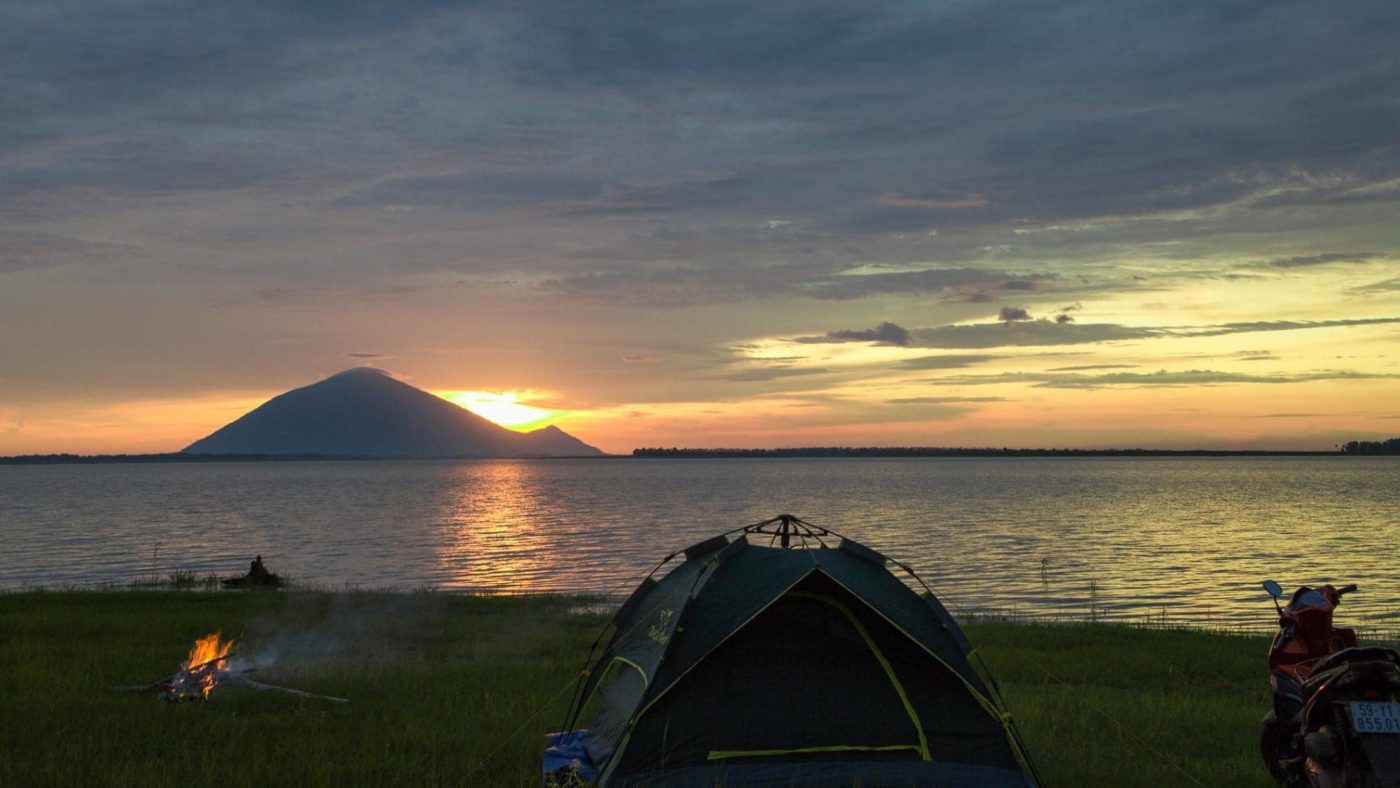
Situated about 90 kilometers from Ho Chi Minh City, Dau Tieng Lake is an irresistible haven for camping in Tay Ninh Vietnam map. Offering tranquility amidst lush green landscapes, it provides an ideal backdrop for short getaways with family and friends.
Dau Tieng Lake transforms the camping experience with a range of activities, including fishing, paddleboarding, outdoor BBQs, and impromptu live music sessions. Also, do not forget to picture the joy of sipping morning coffee in crisp air, exhaling into the mist, and witnessing the sun’s first rays through distant clouds against the majestic Ba Den Mountain backdrop – a truly enchanting experience for camping in Vietnam Dau Tieng Lake.
2.3.2. Tri An Lake (Dong Nai)
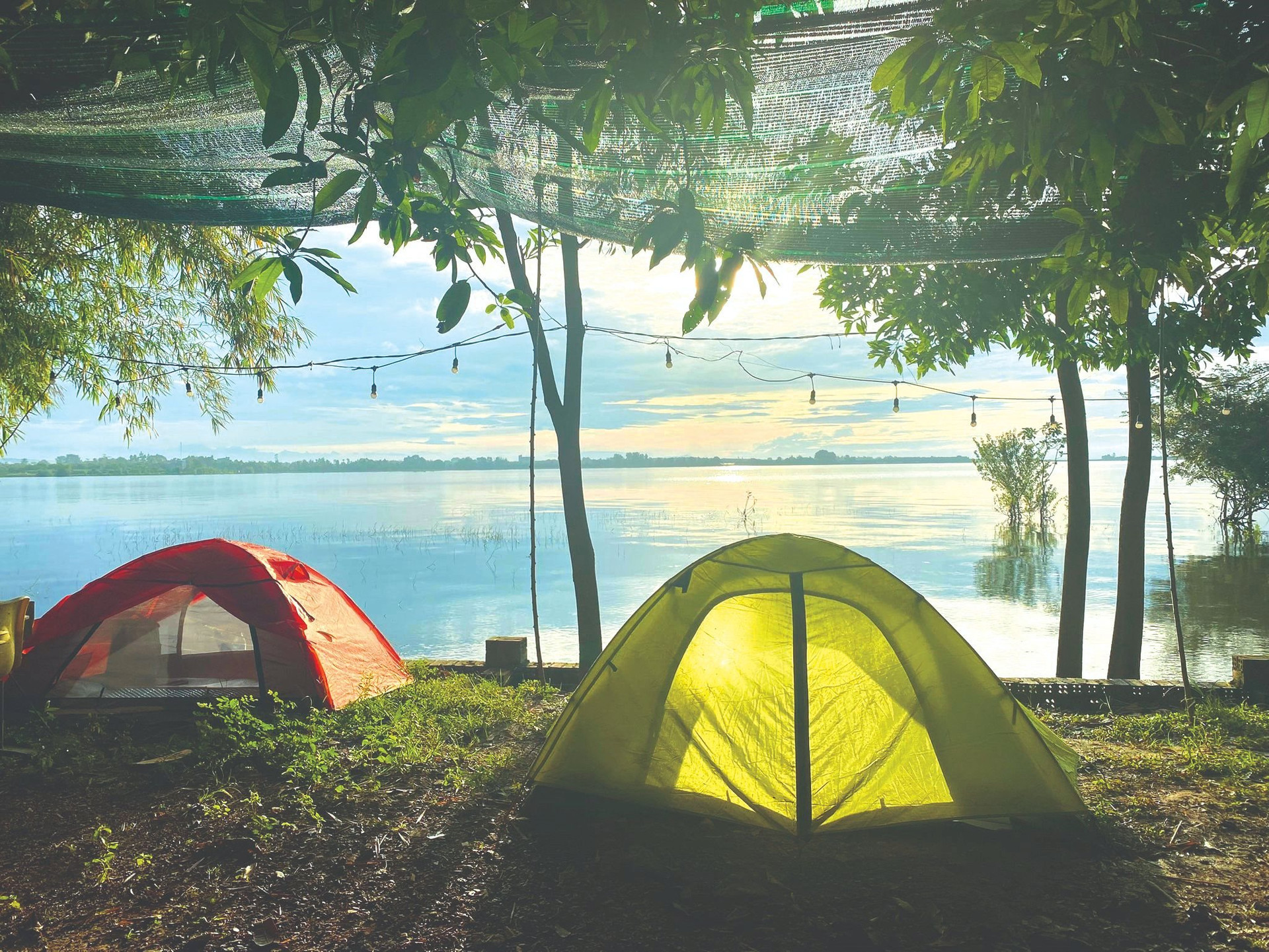
Tri An Lake, just over 70 kilometers from Ho Chi Minh City and originally designed as a reservoir for the Tri An hydroelectric plant, surprises with its picturesque natural beauty. With more than 70 islands, some inhabited and others developed for tourism, the lake has become a captivating destination for camping in Ho Chi Minh City’s adjacent area.
Along its shores, free camping in Vietnam is possible, offering opportunities to capture breathtaking sunset or sunrise scenes. Visitors can set up camp, cook a simple meal, and immerse themselves in the serene landscape as the evening breeze whispers through. It is a true delight for nature enthusiasts seeking a tranquil escape.
2.3.3. Ta Dung Lake (Dak Nong)

Complemented by the scenic embrace of the Ta Dung Nature Reserve, Ta Dung Lake has earned its moniker as the “Ha Long Bay of Tay Nguyen Vietnam,” becoming a premier destination for camping in the Vietnamese Central Highlands. Upon arrival, visitors find themselves enchanted by the lake’s untamed wilderness and distinctive ecological charm.
To fully immerse themselves in the serenity, adventurers can rent a boat, gracefully gliding across the tranquil waters and immersing themselves in the natural ambiance. Along the lakeside, camping activities come to life, offering a serene setting to witness the sun’s final glow and embrace the dawn chorus of gibbons during sunrise.
2.4. Coastal regions with camping facilities
2.4.1. Coco Beach Camp (Binh Thuan)

Coco Beach Camp in Binh Thuan Province offers a unique camping experience in Vietnam. Upon arrival, the camp’s distinct charm unfolds with unique decor, a vibrant atmosphere, and friendly staff, creating a sense of entering a different world compared to nearby beaches. Unlike traditional hotels, the camp features colorful tents scattered across the beach and a lush garden, providing a unique beach experience.
The seaside camping area is a haven for outdoor enthusiasts, offering windsurfing, kayaking, diving, fishing, yoga, and more. In the morning, a nearby fishing village allows visitors to purchase freshly caught seafood for a delightful beachside meal. Coco Beach Camp stands out as a dynamic destination for glamping in Vietnam, where nature and community converge for an unforgettable coastal retreat.
2.4.2. Trung Luong Camping Site (Binh Dinh)
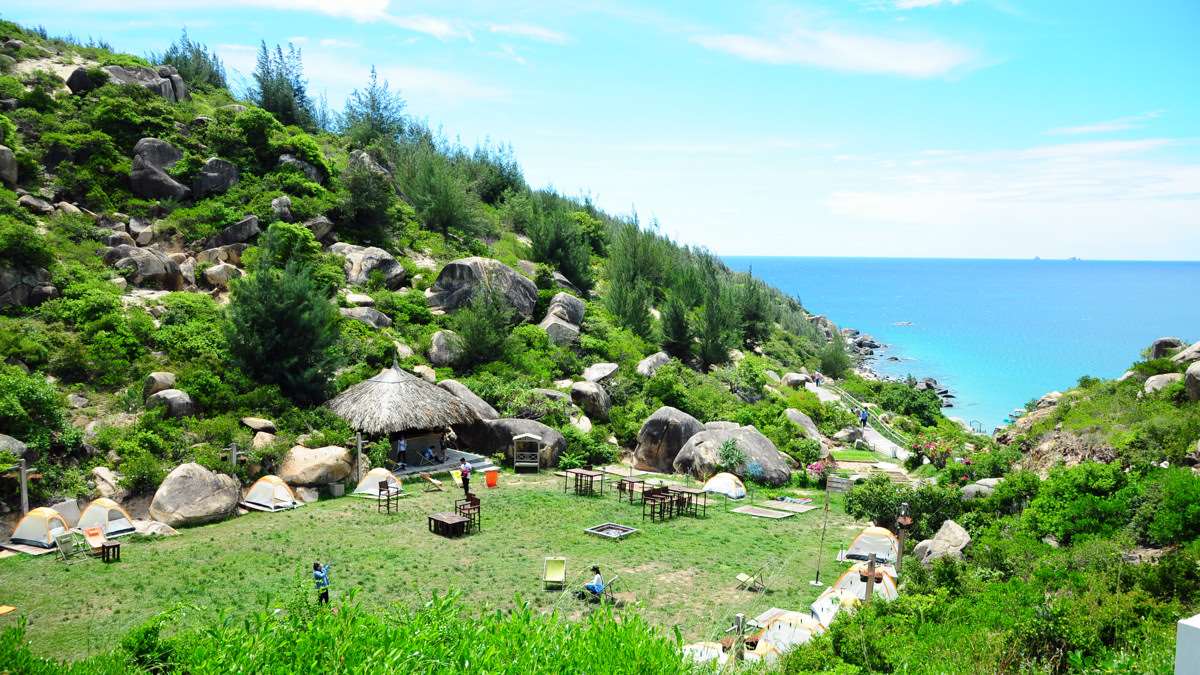
Nestled just 30 kilometers from Quy Nhon city in Binh Dinh Province, Trung Luong campsite is an ideal destination for camping in Vietnam. Its prime location on a scenic beach, enveloped by captivating natural beauty, provides a perfect setting for a seaside retreat. Accessible through a short pass, the journey to Trung Luong provides breathtaking views of the blue sea and floating boats, immersing visitors in the essence of the sea with the gentle embrace of the wind. Along the way, acquiring fresh seafood sets the stage for a delightful night of fireside barbecues. The following day invites exploration of underwater corals. Given the limited area, it is advisable to reserve your camping spot in advance, ensuring an unforgettable experience in this coastal haven.
2.4.3. Dai Lanh Camping Site (Khanh Hoa)
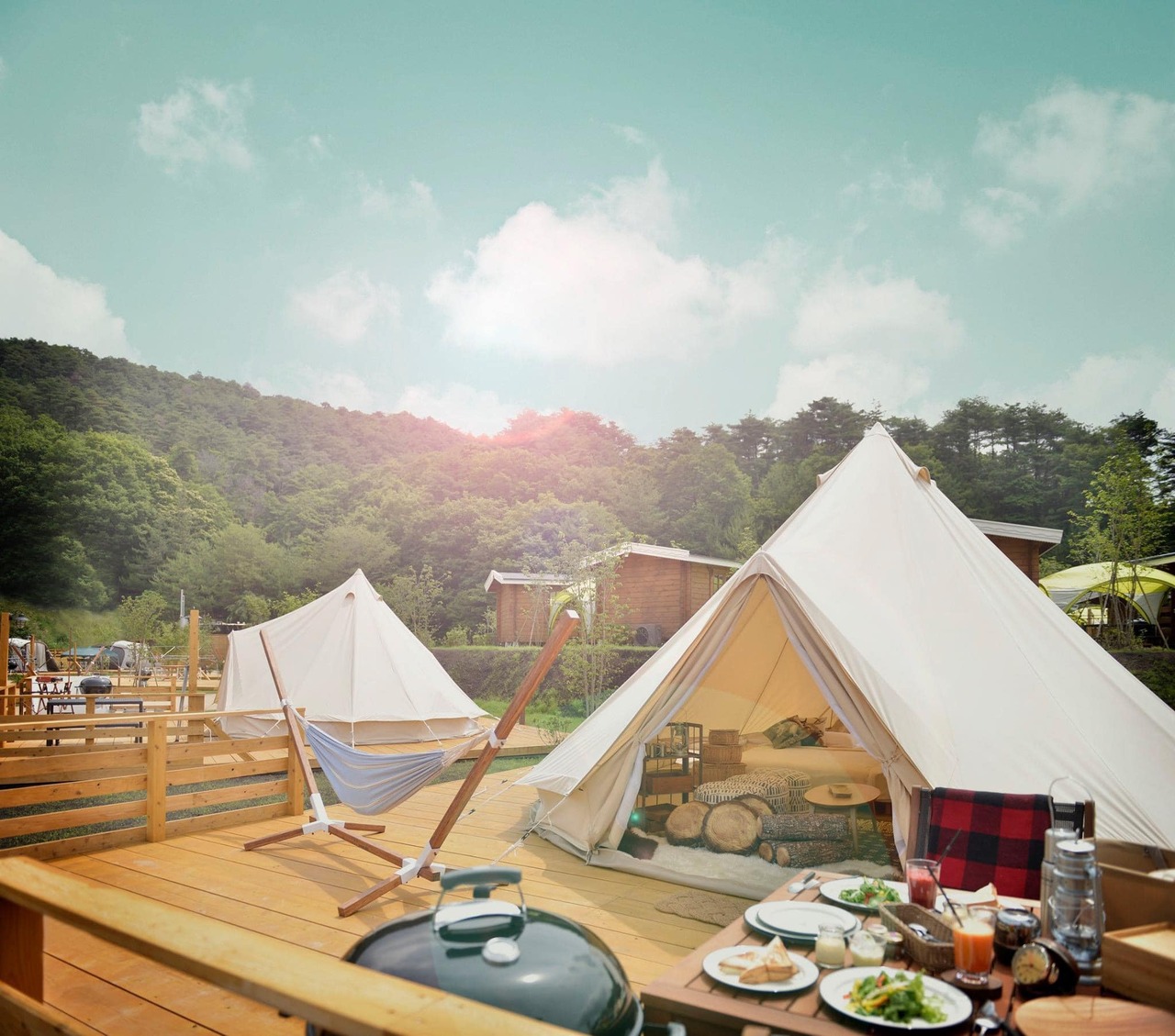
Situated along the shores of Dai Lanh Beach in Khanh Hoa Province, about 80 kilometers north of Nha Trang city, the newly acclaimed Dai Lanh campsite offers a captivating experience for camping in Vietnam. Passing through the Ca Pass unveils the vast azure expanse, signaling the arrival at Dai Lanh campsite.
Noteworthy for its densely arranged wooden houses encircling the beach, the site boasts diverse and appealing activities, including swimming, outdoor camping, and various sports. The epitome of beauty and romance emerges at sunrise as the sun ascends between two eastern islands, casting a mesmerizing golden glow upon the sea. Dai Lanh campsite promises a picturesque and lively retreat, inviting travelers to embrace the coastal charm of Vietnam.
3. Tips to have the optimal experience with camping in Vietnam
3.1. The best time for camping in Vietnam
The best times for camping in Vietnam coincide with distinct seasons, offering unique experiences across the country. Post-Tet in February and March, along with the early summer months of May, June, and July, provide favorable conditions for outdoor camping. During these periods, travelers can immerse themselves in the awe-inspiring beauty of Vietnam’s landscapes. If the desire is to camp amidst the terraced rice fields in the Northwest, the optimal time is roughly from September to November.
Adding to these recommendations, it is important to note that Vietnam’s diverse climate means careful consideration of specific regions and their weather patterns. Hence, tailoring plans to local climates ensures a seamless and enjoyable camping experience in Vietnam.
3.2. Preparation for camping in Vietnam
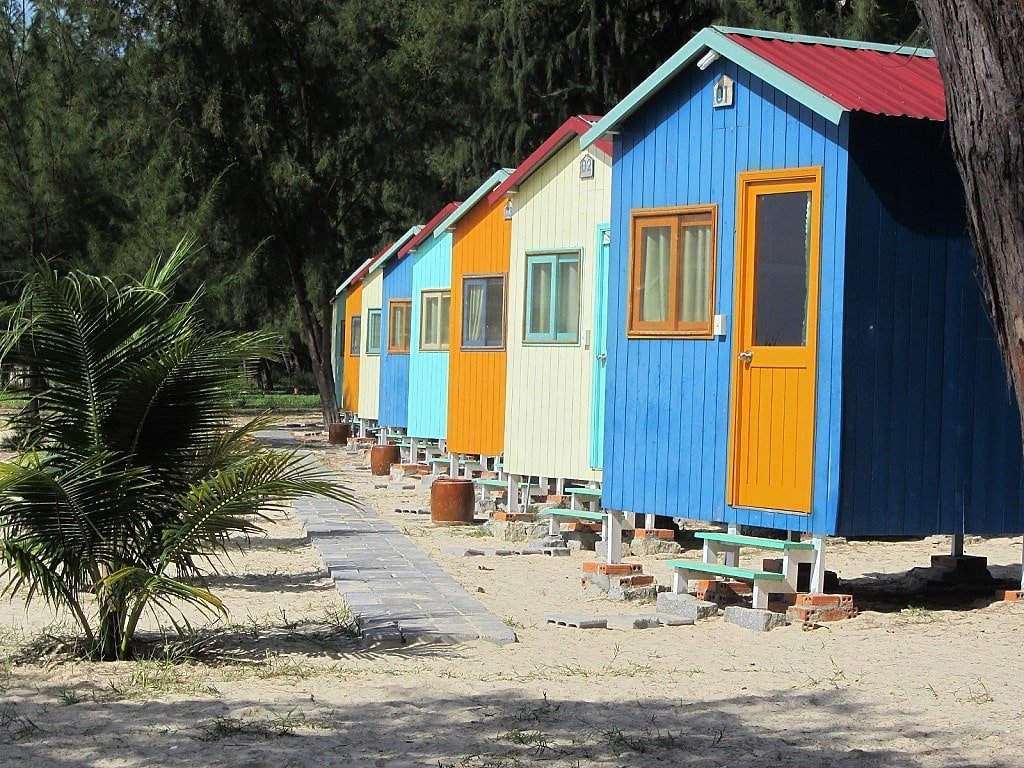
Preparing for an exhilarating camping trip in Vietnam requires careful consideration and a little strategic planning. Here’s a comprehensive guide to the essential items and thoughtful preparations needed to ensure a seamless and enjoyable outdoor adventure.
- Tents and accessories: Consider the ground type (sand, forest floor, rocky terrain) before visiting to bring suitable tent pegs. Even if the tent is waterproof, bring an extra sunshade or rain cover. Prepare a large tarp for overall coverage; it is suitable for sitting outside the tent.
- First aid kit: Always carry a well-equipped first aid kit and stay updated on first aid practices.
- Cooking equipment: BBQ is a traditional meal option that can be adjusted easily based on preferences. Make sure you bring a stove (alcohol stove, charcoal stove, or gas stove) and cooking utensils that are lightweight, non-stick, and stackable for organized packing.
- Lighting: Lanterns provide ample light; hang them for overall illumination. Flashlights are essential for navigating in the dark and can serve as emergency signals. Headlamps offer hands-free lighting, useful for tasks or reading. LED lights add ambiance and decoration.
- Cooler: The size of the cooler depends on the number of people, duration, and food quantity. Consider having both a large and a small cooler, as you can store the small one inside the large when not in use.
- Sleeping gear: Pack sleeping bags of your choice, depending on the climate and season. Mattresses are also a useful addition (foam or inflatable, suitable for the terrain). You should also consider bringing additional insulation for colder nights.
- Portable fan: Essential for hot summer nights; consider a rechargeable fan.
- Camp furniture: Lightweight foldable chairs offer stability and comfort. Take foldable tables with you, aluminum or wood, depending on your budget and space. You can use nylon tarps to substitute for tables if needed.
- Storage bins and wheeled cart: Organize your camping gear in labeled bins for easy access. A wheeled cart is essential for carrying equipment, especially in remote areas.
Remember to adapt these recommendations based on personal preferences, the number of campers, and the specific camping location. Preparing and organizing equipment in advance ensures a smoother and more enjoyable experience when camping in Vietnam.
3.3. Important notes for your camping in Vietnam
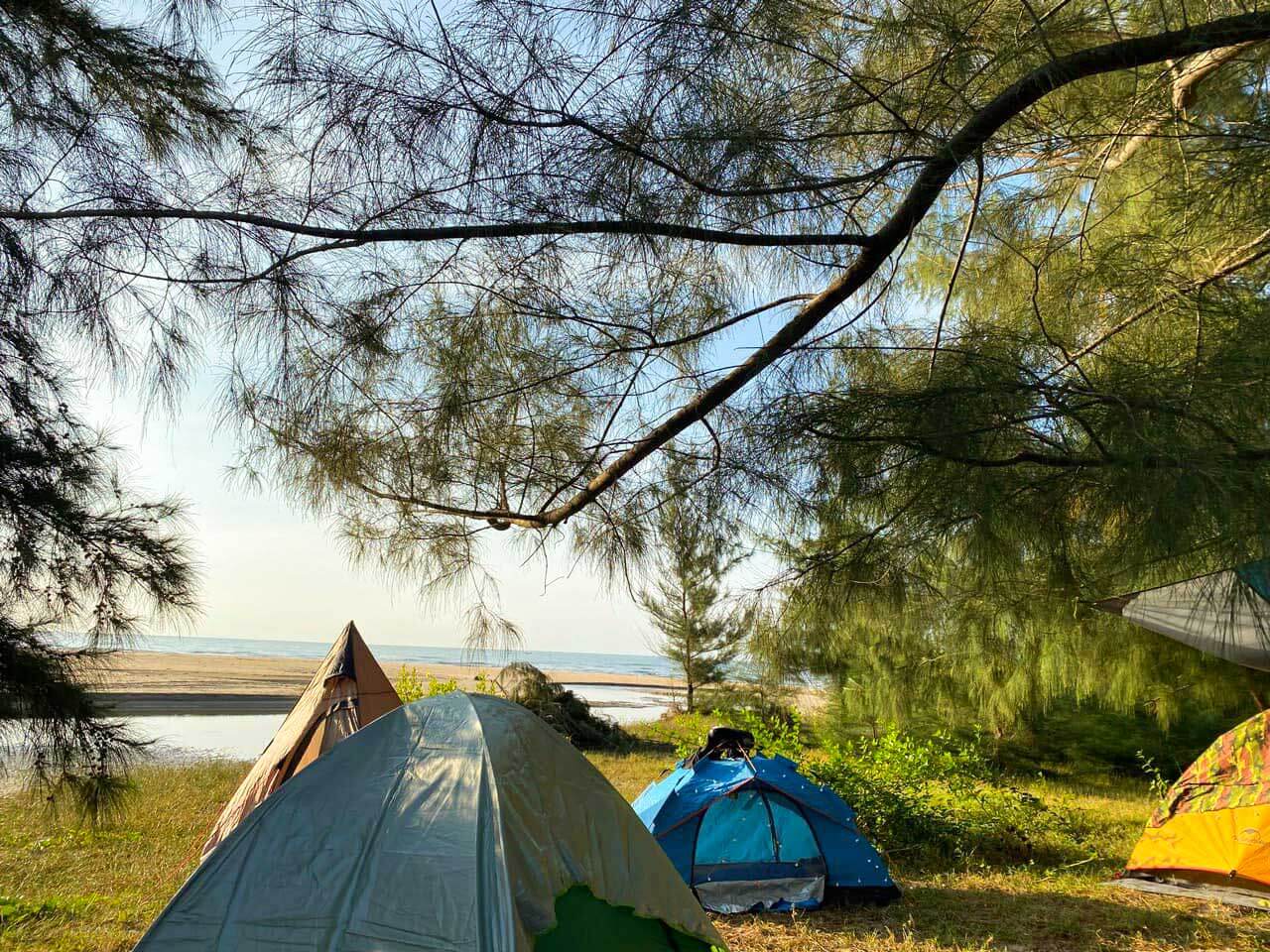
For those venturing into the enchanting world of camping in Vietnam, a well-prepared checklist and a mindful approach to campground etiquette are essential elements for a seamless and enjoyable journey amidst nature.
- Checklist preparation: Create a detailed checklist covering essential items such as tent equipment, kitchen tools, clothing, footwear, medications, and personal items for a comprehensive and safe camping experience in Vietnam.
- Adherence to Vietnam campsite rules: Follow campsite rules diligently, respecting communal rest periods, utilizing appropriate lighting, and maintaining cleanliness by tidying up the space before departure. If bringing pets, secure them with a leash to ensure the safety of others.
- Weather awareness: Prioritize understanding the weather conditions in the chosen camping area, whether it is near a river, on a mountain, or at the beach. Opt for camping on sunny days, avoiding rain and chilly temperatures. For those lacking survival skills, choose well-established camping areas, especially when with children.
- Campsite tidiness: Before leaving, ensure a thorough cleanup of the campsite, leaving it in better condition than upon arrival. Proper waste disposal is essential for environmental protection, reflecting responsible camping practices.
Camping in Vietnam offers a unique opportunity to connect with the unspoiled beauty of this country. Every camping expedition guarantees a memorable journey filled with exploration and tranquility amidst Vietnam’s diverse landscapes. Hopefully, our guide above can assist you in planning a fulfilling and well-prepared camping experience in this captivating destination.
